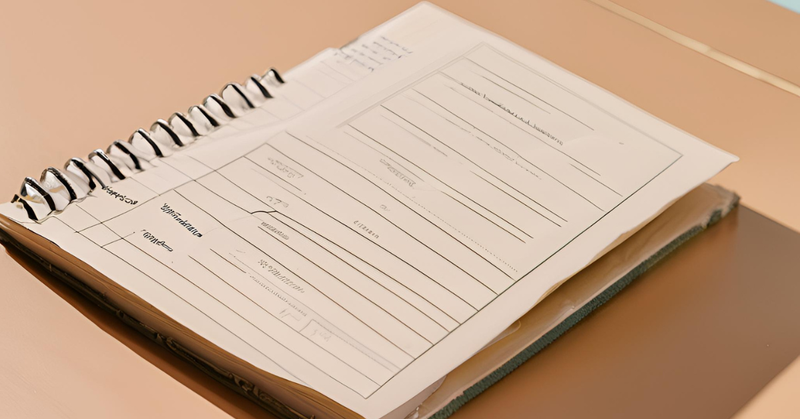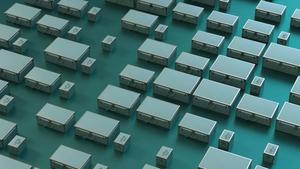You’ve put a lot of effort into hiring the right people for your small business, hoping they’ll quickly become valuable members of your team.
Yet, Gallup finds that only 12% of employees strongly agree that their organization does a nice job onboarding new hires. This means many new employees start with unclear expectations and little support.
A poor start can lead to low morale, which is a big factor in high turnover. Harvard Business Review reports that 23% of employees leave before they reach their first anniversary in a new role.
On the other hand, a strong onboarding process can improve new hire retention by 82%.
Employee handbooks are an essential part of staff onboarding – as they provide clear guidance and support new hires.
This article serves as a handy guide and template to help you create or refresh your current handbook.
After reading it, you'll be ready to set up a welcoming onboarding process that gets your new hires off to a fantastic start.
What is an employee handbook?

An employee handbook is a playbook for your business. It's a written guide that helps your employees understand the rules, expectations, and benefits of working for you.
This guide is often a go-to resource for everything from your company values to details about paid time off to health insurance arrangements.
It can also cover basic workplace conduct and more complex matters like exempt employees and the Fair Labor Standards Act.
It also often addresses federal and state laws, including local laws that might affect your business.
Generally speaking, an employee handbook outlines what you expect from your team and what they can expect from you, along with their rights and arrangements.
What to include in an employee handbook?
When creating your employee handbook, you should mention several areas that help employees understand what’s required when working at your company.
Company overview
#1 - Company values and mission
This sets the tone for everything that follows and lets employees understand what your business stands for. It’s not only about what you do but why you do it.
More than half of people would quit a new job if the company’s culture didn’t match their values.
This should be the foundation of your employee handbook. Give your team a sense of purpose and a bigger picture through your values.
Example:
“Our company is driven by a commitment to innovation and integrity, aiming to provide top-quality products while positively impacting our community.
“Our mission is to exceed customer expectations through dedication and teamwork.”
Workplace conduct
#2 - Code of conduct and workplace behavior
Here is where you lay out the rules for proper behavior. Set clear expectations for how employees should interact with each other, customers, and the organization itself.
You should cover topics like behavior, teamwork, and respect. The goal is to create a positive and productive work environment, so make your code of conduct as straightforward and easy to follow as possible.
Example:
“Employees are expected to treat colleagues and clients with respect and work collaboratively to achieve team goals.
“Any behavior that undermines this environment, such as dishonesty or hostility, will not be tolerated.”
#3 - Dress code
Different workplaces require different dress codes. In 2022, 70% of employers allowed casual dress codes, while only 29% required business casual clothing.
It doesn't matter if your business has a formal dress code or a more casual approach - this section should clarify what's acceptable, especially if your company requires client visits.
Your priority should be maintaining a standard that aligns with your company’s culture and the type of work you do, beyond just appearances.
Example:
“The dress code in our office is business casual. Employees should wear clothes that are neat, clean, and appropriate for a professional setting. This includes avoiding overly casual attire like shorts and flip-flops.”
#4 - Harassment and discrimination policies
More than 50% of employees experience workplace harassment and misconduct. Your handbook should inform employees that your organization is committed to building a safe and respectful workplace.
Make it clear that any form of discrimination will not be tolerated. Also, explain the steps employees should take if they encounter or witness such behavior.
Example:
“Our company is dedicated to creating a respectful workplace free from harassment and discrimination. Any form of harassment, including verbal, physical, or sexual, is not acceptable. Employees should report any such incidents to their supervisor or HR immediately.”
#5 - Conflict resolution procedures
85% of employees experience conflicts at their workplace, so it's useful to have a plan in place for resolving disputes. This section of your employee manual should detail how employees can address conflicts, whether it’s with a coworker, manager, or even a customer.
With a clear process, you keep small issues from becoming bigger problems.
Example:
“If you encounter a conflict with a coworker or supervisor, address it calmly and directly with the person involved. If the issue is not resolved, seek assistance from your manager or HR to mediate and find a solution.”
#6 - Equal employment opportunity statement

Including an equal employment opportunity (EEO) statement is highly recommended as it aligns your handbook with employment laws. This statement shows your commitment to providing fair treatment for all employees.
Example:
“We are an equal opportunity employer and are committed to treating all employees fairly and without bias. We do not discriminate based on race, gender, age, religion, or any other protected characteristic. We promote a diverse and inclusive workplace.”
Attendance and compensation
#7 - Attendance and punctuality policies
More than one in four workers arrives late to work at least once a month. Despite the obvious frustration it can cause, it also could make employees who are otherwise punctual, unsettled.
In your employee handbook, you should specify what happens to someone who is late or absent. Be clear about how to report it and what counts as an excused absence.
Example:
“Employees are expected to arrive at work on time and notify their supervisor as soon as possible if they will be late or absent. Unplanned absences should be reported at least two hours before the start of your shift.”
#8 - Compensation and payroll details
Explain how and when employees get paid. Include information about pay periods, overtime, and any bonuses or incentives.
Also, you should detail what to do if an employee has been paid incorrectly.
Example:
“Salaries are paid bi-weekly, with payments made to employees’ bank accounts. Overtime is calculated at 1.5 times the regular hourly rate for any hours worked beyond 40 in a week. Report any payroll issues to HR promptly.”
#9 - Paid time off (vacation, sick leave, holidays)
Cover your policies on paid time off (PTO), including vacation days, sick leave, and holidays. Let your employees know:
- how much PTO they have left
- how to request time off
- and what happens if they don’t use it all by the end of the year.
Example:
“Employees earn 20 days of paid vacation each year, in addition to 5 days of sick leave. Holiday pay is provided for company-recognized holidays. Requests for time off should be submitted at least two weeks in advance.”
#10- Employee classifications (full-time, part-time, exempt, non-exempt)
Not all employees are the same, and their classifications can affect things like pay and benefits. Here, explain the difference between:
- full-time roles
- part-time roles
- exempt employees
- and non-exempt employees.
A clear distinction helps your team understand where they fit in and what that means for their compensation and working hours.
Example:
“Full-time employees work 40 hours a week and are eligible for all benefits. Part-time employees work less than 30 hours a week and receive fewer benefits. Exempt employees are not eligible for overtime, while non-exempt employees are.”
#11 - Fair Labor Standards Act (FLSA) compliance
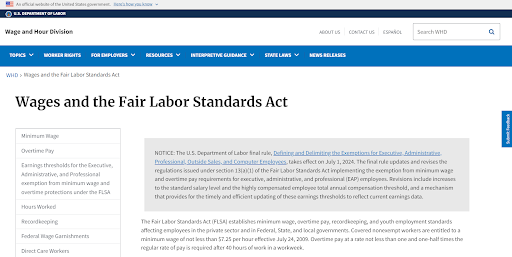
The Fair Labor Standards Act (FLSA) sets the rules for things like minimum wage, overtime pay, and child labor. Include a section in your handbook that mentions your compliance with the FLSA.
Example:
“We comply with the Fair Labor Standards Act (FLSA) by adhering to all regulations regarding minimum wage, overtime pay, and recordkeeping. Employees are classified according to FLSA guidelines and will be compensated fairly for their work.”
Employee benefits
#12 - Employee benefits (e.g. health insurance, retirement plans)
According to research by the Society for Human Resource Management, 60% of employees said that benefits play a big role in their decision to stay with their current employer. Mention the benefits you offer, such as health insurance, retirement plans, and any other perks.
Let your employees know what benefits are available, how to sign up for them, and when they become eligible if any conditions apply. Clear guidelines help your team make the most of what you offer.
Example:
“We offer a comprehensive benefits package including health insurance, dental and vision coverage, and a 401(k) retirement plan. Employees are eligible to enroll in these programs after 30 days of employment.”
#13 - Family and Medical Leave Act (FMLA) information
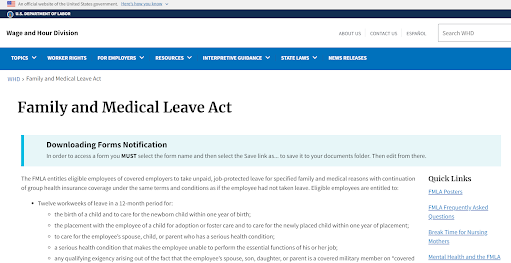
In the US, the Family and Medical Leave Act (FMLA) gives employees the right to take unpaid leave for certain family and medical reasons without losing their job. Explain who qualifies for it and what it covers.
Be clear about how to request leave and what happens while someone is out so there are no surprises.
Example:
“Eligible employees can take up to 12 weeks of unpaid leave under the Family and Medical Leave Act (FMLA) for serious health conditions or to care for a family member. Requests for FMLA leave should be submitted to HR with at least 30 days’ notice when possible.”
#14 - Workers' compensation policy
Accidents happen, even in the safest workplaces. Your workers' compensation policy should go through what to do if an employee gets hurt while working.
Describe:
- how to report an injury,
- what benefits are available,
- and how claims are handled.
Reassure your team that they’re covered if something goes wrong so they feel more secure at work.
Example:
“If you are injured while working, report the injury to your supervisor immediately and seek medical attention. Workers' compensation benefits are available to cover medical expenses and lost wages. The HR department can provide details on filing the right claim.”
Performance and development
#15 - Performance review process
Explain how often reviews happen and what they involve. No matter if you’re doing annual reviews or more frequent check-ins, always let your employees know what to expect. They can prepare and understand how their work is evaluated.
Example:
“Performance reviews are conducted annually to discuss accomplishments, set goals, and identify areas for improvement. Employees will receive feedback and have the opportunity to discuss their performance with their manager during these reviews.”
#16 - Disciplinary actions and procedures
Sometimes, things don’t go as planned, and disciplinary action is needed. Here, outline the steps you take when someone isn’t performing properly. This might include:
- verbal warnings,
- written warnings,
- or other corrective actions.
Being upfront about this process is how to prevent misunderstandings and demonstrate how you handle issues fairly.
Example:
“If an employee fails to meet performance expectations or violates company policies, disciplinary actions may include verbal warnings, written warnings, or suspension. Serious or repeated issues may result in immediate termination of employment.”
#17 - Promotion and transfer policies
Everyone wants to know how they can advance in their career. Detail promotion and development opportunities in your company. Explain the criteria for moving up or into a new role – as well as how employees can express interest in these opportunities.
Clear guidelines mean your team can see a future with your business and stay motivated.
Example:
“Promotions are based on performance, experience, and available positions. Employees interested in advancing their careers or transferring to different departments should discuss their goals with their manager and apply for open positions as they arise.”
#18 - Training and development opportunities
In this part of your employee manual, talk about any training programs or development opportunities you offer. It could be:
- on-the-job training
- webinars
- workshops
- or external courses.
Let your team know how they can continue learning and improving.
Example:
“We support ongoing professional development by offering various training programs, workshops, and educational courses.
“Employees are encouraged to take advantage of these opportunities to improve their skills and advance their careers.”
Workplace policies
#19 - Workplace safety guidelines
Use this section to outline your workplace safety guidelines, so employees know how to keep themselves and others safe. Cover things like:
- emergency procedures
- proper use of equipment
- and any specific safety measures relevant to your industry.
It's how you can prevent accidents and create a safer work environment.
Example:
“Employees should follow all safety protocols, including wearing appropriate personal protective equipment and reporting any unsafe conditions. Emergency exits and procedures are posted in all common areas.”
#20 - Use of company property and technology
Your employees will likely use company property and technology as part of their job.
Here, describe how these resources, such as computers, vehicles, and other equipment, should be used.
Example:
“Company property, including computers and vehicles, should be used for business purposes only. Personal use of company technology is limited and should not interfere with work duties.
“Employees are responsible for the care and maintenance of these resources.”
#21 - Social media and communication policies
Outline how employees can use social media concerning work. This could include rules on:
- what’s appropriate to post
- how to communicate with customers online
- and how to handle any online issues that may arise.
It’s about keeping your reputation in the right shape while giving employees clear boundaries.
Example:
“Employees must use social media responsibly and avoid posting anything that could negatively impact the company’s reputation. Any work-related communication should remain professional and adhere to company guidelines.”
#22 - Work-from-home or remote work guidelines
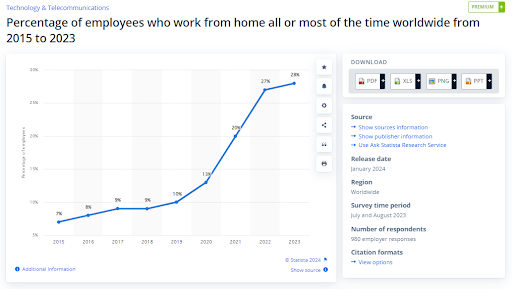
Working from home is increasing globally. If you offer flexible working, explain how it works exactly in the context of your organization. Detail things like working hours, suitable places to work and much more.
Clear guidelines make remote employees stay connected and productive.
Example:
“Employees working from home should maintain regular work hours, stay in touch with their team, and make sure they have a suitable workspace. All company equipment and data should be handled securely, and any technical issues should be reported immediately.”
#23 - Confidentiality and privacy policies
Educate your employees on what information is considered confidential, how to handle sensitive information, and how breaches will be handled.
Example:
“Confidential information, including client data and proprietary business information, must be protected at all times.
“Employees should not disclose sensitive information to unauthorized parties and must follow company procedures for processing confidential materials.”
Employment guidelines
#24 - Termination procedures and exit interviews
Parting ways with an employee is never easy, but having a defined process can make it smoother. Outline your termination procedures. Explain:
- how notice is given
- what happens during the handover
- what to expect regarding the last paycheck.
Also, consider including exit interviews as a step in the process. They’re a good opportunity to give and collect feedback, and learn how you can improve the workplace – even without that specific employee in your business.
Example:
“When employment is terminated, an employee receives a final paycheck including any accrued vacation time. An exit interview will be conducted to discuss the employee’s experience and gather feedback to help improve the workplace. The redundancy pay may apply depending on the reasons for termination.”
#25 - Compliance with federal and state laws
Use this part of your handbook to mention your commitment to following all relevant federal and state laws.
This could include labor laws, safety regulations, and anti-discrimination laws. It shows that your business is run responsibly and that you take legal obligations seriously.
Example:
“Our company complies with all federal and state laws, including those related to labor, safety, and discrimination. We regularly review our policies to be sure we meet all legal requirements and stay informed of any changes.”
#26 - At-will employment statement
At-will employment is a common practice in 49 states in the USA. This means that either the employer or the employee can end the employment relationship at any time, for any reason, as long as it’s not illegal.
Include a clear at-will employment statement in your handbook to set the right expectations from the start.
Example:
“Employment with our company is at-will, which means either the employee or the employer can terminate the employment relationship at any time, with or without cause, as long as it does not violate any legal rights.”
#27 - Whistleblower protections
Creating a safe space where employees can speak up is important. This section should explain your whistleblower protections.
Let your employees know that they can report illegal or unethical behavior without fear of retaliation.
Example:
“Employees are encouraged to report any illegal or unethical behavior without fear of retaliation. The company has a strict policy against retaliation and will protect whistleblowers from any adverse actions related to their reports.”
#28 Conflict of Interest policy
There's a huge chance this section might never be needed, but it's better to have a disclaimer in your employee handbook template. Explain what situations might create a conflict and how employees should disclose them. This can include:
- Outside business activities → Employees should disclose if they own, manage, or work for another company that competes with or does business with their employer. For example, if an employee runs a side business offering similar services to their employer (e.g., a marketing agency employee freelancing for clients in the same industry), this must be disclosed. Similarly, if they take on a consulting role for a competitor, it could present a conflict.
- Personal relationships in business deals → If an employee's family member or close friend is involved in a business transaction with the company, they should report it to avoid potential favoritism. Suppose a purchasing manager hires a supplier owned by their sibling without informing the company. Even if the supplier offers fair pricing, the lack of transparency can raise concerns about bias. Another example is an employee negotiating contracts with a business owned by their spouse.
- Gifts or incentives – Employees must be transparent about receiving gifts, discounts, or incentives from vendors or clients, ensuring these do not influence business decisions. If an employee responsible for vendor selection receives expensive tickets to a concert from a supplier bidding for a contract, this could be seen as an attempt to influence their decision. Even smaller gifts, like free meals or holiday packages from a frequent client, should be reported if they could impact business decisions.
#29 Bring Your Own Device (BYOD) guidelines
After the 2020 lockdowns, using personal devices for work became even more important. To keep things secure and clear, outline a BYOD policy that covers these four key elements:
- Acceptable use → Clearly state which personal devices can be used and for what work-related tasks. If an employee uses company devices for freelance graphic design work outside of their job, or if they take office devices home for their personal business, this might be a conflict of interest.
- Security requirements → Create a one-page document outlining good security practices for employees. Require measures such as strong passwords, updated antivirus software, and secure Wi-Fi connections. Employees should use password managers to store complex passwords and enable two-factor authentication for added protection.
- Data protection → Set guidelines for encrypting sensitive work data and backing it up regularly. Employees should know how to use company-approved cloud storage solutions or external drives for backups. For non-tech-savvy employees, provide clear step-by-step instructions, such as how to enable encryption on their devices or schedule automatic backups.
- Incident reporting → Explain how employees should report lost, stolen, or compromised devices promptly. For example, if a laptop is stolen while traveling, employees should immediately notify IT support and remotely lock or wipe the device if possible. Similarly, if they suspect a phishing email, they should forward it to the security team before clicking any links.
How much is an employee handbook?
The cost of employee handbooks can vary widely. You might find free templates online (like in this blog article), or you could spend several hundred dollars on professionally developed handbooks.
Prices can range from $0 if you’re using a basic template and do it yourself – to several thousand dollars if you’re hiring a consultant or legal expert to create a custom handbook tailored to your business.
Why employee handbook audits are important
Having an employee handbook is great, but it’s not a one-and-done task. You need to review it periodically to ensure accuracy, especially as your business grows.
For instance, when COVID-19 hit, companies needed to update handbooks to reflect remote work policies.
Laws and workplace norms change over time. What worked in the past may no longer apply.
Regular handbook reviews help you catch these changes and prevent future issues. An audit allows you to spot gaps or outdated practices, like an old dress code or unclear attendance rules.
It’s also a good opportunity to ensure that the handbook is easy to understand. Employees should be able to quickly grasp what’s expected of them. If there’s anything confusing, an audit gives you the chance to clear it up.
Small business employee handbook templates
- Model Employee Handbook for Small Businesses by The NFIB Legal Foundation
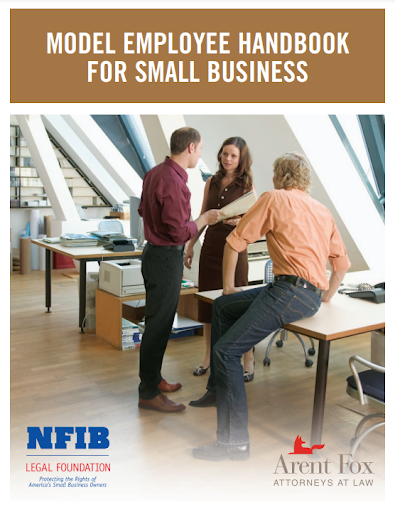
- Employee Handbook by Betterteam

- Employee Handbook Template by Xtensio
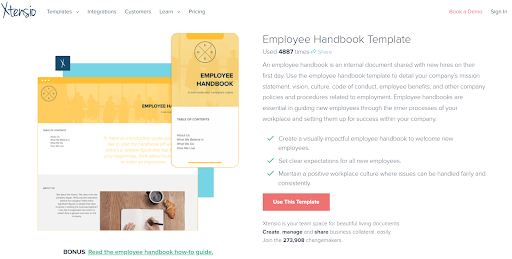
- Employee Handbook by Guru
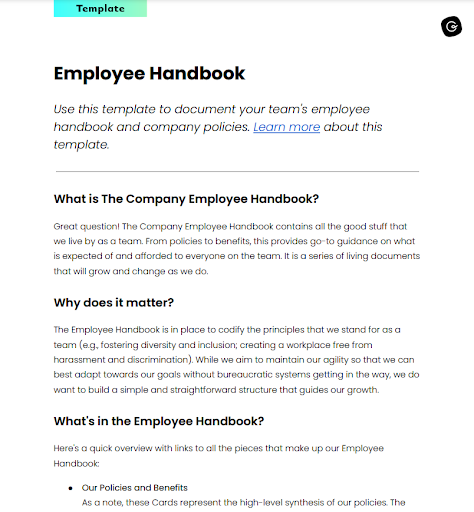
- 7 Free Employee Handbook Templates by eForms

Check out additional resources:
- 10+ small business spreadsheet templates
- Your ultimate small business plan template
- How to create, manage and stick to a small business budget + template
Now, create your employee handbook
Creating an employee handbook isn't just a task to check off your list - it's your chance to set the tone for your workplace.
A clear, well-thought-out handbook can help new hires settle in quickly and keep your team on the same page.
If you put in the effort now, you’ll avoid any misunderstandings down the road and create a smoother experience for everyone involved. Plus, when your employees know what to expect, they’re more likely to stick around.
If you found this guide useful, check out our blog for more tips and resources to support your small business journey.
